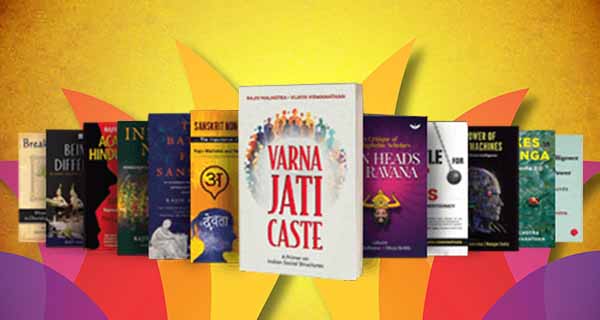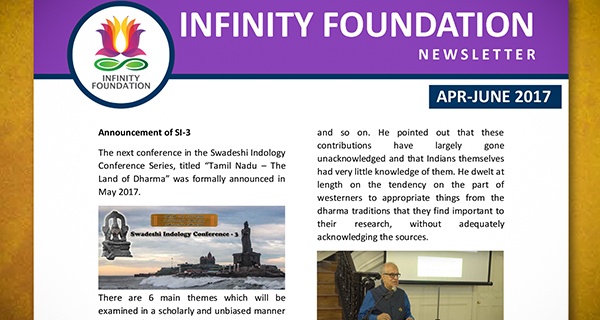Auroville International Annual
Auroville International Annual All USA Meeting (AUM)
Gatherings of sadhaks always feel odd. We’re a curiously disconnected bunch, at least in the United States, more isolated than unified. While not exactly hermits, it often feels like many at such a conference would be more comfortable sitting alone in a cave than in a dining room surrounded by other sadhaks.
Trying to organize — or just survive — a large meeting in the Integral Yoga is always a challenge. What qualities make for a successful meeting? What kinds of activities should take place? How much of the schedule should
be fixed, and how much kept open for spontaneous encounters, experiences, inspirations?
We wrestled with these questions all year, and part of the joy of such wrestling is that it forced us to confront the basic question: how do we share this yoga, how do we create an atmosphere that allows the Integral Yoga to flower, where Sri Aurobindo and the Mother will descend, an atmosphere that fosters a deeper connection among diverse cultures, ages, backgrounds?
One answer is that such an atmosphere can’t be created, because the essential ingredient is the consciousness of all who attend. A collective emerges, with aspirations of its own, midnight colloquies, afternoon volleyball, solitary prayers, strange and wonderful encounters.
The mix each year keeps changing. For the past few years, here in the states, the Indian-born contingent has been steadily growing, such that this year fully half the participants were Indian. One benefit is that chai is omnipresent, a necessary break from the bland, convent-style food we were served. (Food was not listed as a high point on many evaluations!)
AUM took place at a retreat center atop a grassy hill, on the peninsula about halfway between San Francisco and San Jose. Mornings and evenings were calm and glorious, and from the top of the hill you could look east
over the bay, to Oakland and Berkeley. The grounds were typical California dry shrub, with a few lawns here and there, a swimming pool with slanting sun in the afternoon, a tennis/volleyball court, all circled by pines and
firs that effectively hid the nearby suburbs.
The center itself is in fact run by nuns, and not surprisingly it is spartan and clean, with Christian symbolism here and there. It has the look of a 1950s high school, with plain walls, large hallways, blackboards in the meeting rooms. The main hallway is shaped as an L, and we had the registration table at one end and the book display table at the other, so that this area became a natural meeting place for wandering, lost, or newly arrived yogis.
The AUM was really organized by three people: Kalpana Patel, Theresa Boschert, and Dian Kiser. (They’ll deny this, of course…) Chandresh and I stayed in the background giving unsolicited advice, and a dozen others
pitched in with everything from running the audio, to setting up the altars, to writing out each day’s schedule, to volunteering with food. But the three main organizers did the lion’s share of the work, holding the conference together with their firm management of details, personalities, and events.
Kalpana brought four unusual and charged items to the AUM. First, she had badgered the trustees of the Pondicherry Ashram until they allowed themselves to be videotaped as a kind of message for the AUM, which was shown on the opening night. Second, she brought one of Mother’s saris, which was placed on the main altar in the room where the entire group met. Third, she brought a set of curtains which had hung in Sri Aurobindo’s room. And most striking of all, with her indomitable will and perseverance, and in an incredibly short time last year, she had a set of life-size photos of Sri Aurobindo and Mother made in Pondicherry. They stood to the left, as the audience faced the front, with one light on each picture and flower arrangements all around. The presence was indescribable.
Lynda and August and I spent part of each evening together, usually walking around the grounds in the half-light, getting to know our individual quirks, histories, foibles, and yogic certitudes. It was great; there’s nothing quite like effusing about transformation while sitting on aromatic pine needles, as the air cools into nightfall.
Such sharings are a great gift of an AUM. Contrary to what the world seems to say, you discover that this yoga is real, that it is emerging in others, that beyond your expectations you share experiences, insights, understandings. And you see that the outer details, such as the music of your youth, the personal happinesses and tragedies, the vices and virtues, sit on the surface of an inner being that can touch and be touched. The
walls of personality slide apart, and lo, there is another child of the Mother, another soul standing pure in light.
And then there are the presentations. This year we had five “keynote” presenters, each unique and surprising, truly surprising in their own fashion. On the first full day, Arabinda Basu spoke on the theme of “Descent of the Immortal.” What tickled me was the self-deprecatory comment in the beginning on how he wouldn’t be quoting chapter and verse, and then how he proceeded to salt his talk with extensive quotes from Sri Aurobindo and the Mother from memory. It was an engaging and personal talk, quite insightful in terms of the finer points of the yoga. It reminded me that study and application really do matter in this yoga, that it is possible to come to a wide and clear understanding of it through diligent work.
That afternoon Lynda gave her presentation, and for me it was the high point of the conference. I can safely say that there has never been anything like it at AUM, and possibly anywhere. The entire presentation was accompanied by a computerized slide show. She began with some personal history, to ground it in space and time; then showed a history of “revolution” through time, with musical accompaniment, from the earliest
civilization to the present. From there she moved into an explanation of how the Integral Yoga, Sri Aurobindo and the Mother are revolutionary; and ended on another slide show with music, a meditative excursion mixing
images of Sri Aurobindo and Mother with fractals, spirals, and other art. The audience was alternately spell-bound, gasping with astonishment, and rolling on the floor with laughter.
The second full day of the conference began with a talk by Alok Pandey on evolution, into which he sprinkled references from a dozen sadhaks, writers throughout history, modern science, all delivered completely from memory. More than the scholarship, however, Alok conveys a unique blend of mental integrity and deep experience. In talking with him a few times during the conference, at meals or elsewhere, I was continually amazed at the sheer depth and fullness of his being. He is the kind of person that we ought to meet early in life — kind, intelligent, engaged, profound — when we need role models, for you never forget such a person.
That afternoon Guy Ryckaert spoke on the spiritual significance of Auroville, mixing slides and talk in a wide-ranging consideration of the beginnings of Auroville, the Mother’s work there, the way in which
different forces come together, and the many practical elements that come into play for such an experiment. Guy is a long-time resident of Auroville who has gravitated to the center of several efforts. Currently his central
occupation is consolidating the land of Auroville, its physical base, for which there are multiple efforts: acquiring the land from private owners, working with the local, state, and national governments, and the management
and development of land within the city itself. His talk was on “Manifestation,” a work which he is doing in quite a concrete way with the very basis of the international city.
The final talk of the AUM was given by Prema Nandakumar, on the afternoon of the last full day. Prema’s talk was on Savitri, but despite her impressive scholarly credentials she delivered a presentation that was
anything but traditional. She taught about this yoga in a surprisingly down-to-earth fashion, speaking directly to the women in the audience, and displaying a fierceness of spirit which made me think of olympic athletes.
Of all the talks at the AUM hers was the most surprising; you heard the echo of the Mother, of the force that creates, upholds, manifests.
The final night of the conference we were treated to a dance presentation coordinated by Dakshina of SASP and Wendy of Matagiri, but including Gloria Posso, and Liz Inglis, with music composed by Vishnu (also of SASP). The dance blended elements of hatha yoga, martial arts, ballet, and modern dance, along with choreographed aspiration and beauty that touched everyone.



